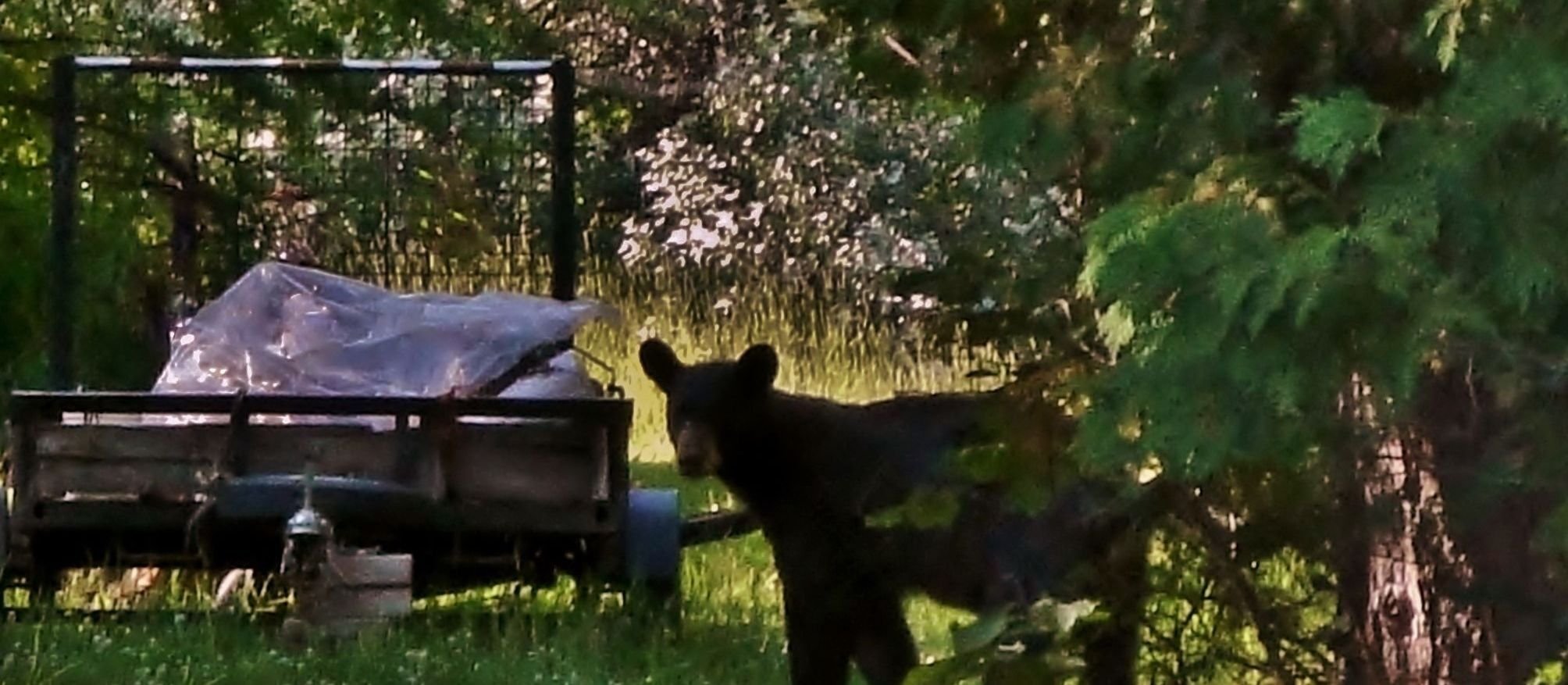
For Beekeepers
Bears are fond of larval bees and honey, and some may actively seek out hives, bypassing other attractants to go straight for a group of bee boxes. Beekeepers can take a number of steps to keep beehives safe from bears, from considering hive placement to harvesting practices to fencing options. These steps work whether you have a couple of hives, run a commercial operation, or anything in between.
Keeping Bears Away from Bees
To minimize possible damage to hives and prevent bears from establishing bad habits, apiaries in occupied habitat should be protected using electric fencing. (Get more tips on using electric fencing below.)
If electric fencing isn’t practical, there are some other methods that you can try, like using a tie-down system or products like this bear-resistant beehive from Bee Fortress. Talk with local bear managers to learn about alternative solutions that may work in your area. Keep in mind that properly installed and maintained electric fencing has been shown to be almost 100% effective in deterring bear damage.
Beyond securing hives, take these steps:
Locate hives as far as possible from timber, brush, and areas like creek bottoms that provide bears with cover and travel routes. Creating open “buffer” zones between attractants like beehives and the places bears are most likely to frequent decreases the likelihood that bears will approach those attractants.
Harvest honey crops as soon as possible after the spring, summer, and fall nectar flows to reduce the attractiveness of hives to foraging bears and prevent the loss of the new honey crop in the event of depredation.
When possible, apiaries should be moved to new locations if bear activity is detected nearby.
Electric Fence Tips for Beekeepers
When building an electric fence to deter bears from attractants like beehives, there are some key design components:
It’s recommended the fence have at least five wires, with the bottom wire no more than 8 inches above the ground and the top wire at least 48 inches above the ground so a bear can’t dig under, go through, or climb over.
The energizer, which powers the fence, needs to be able to provide a strong enough shock to deter a bear. It should have a rating of at least 0.7 stored Joules or 7,000 volts. The energizer can either plug into an outlet or battery or be solar powered.
The rest of the fence design depends on individual needs, but will require a grounding system, fence wire, posts, insulators, and a few other accessories.
As a short-term solution, or if a bee yard is being moved frequently, netted electric fence kits can make the process even easier.
It’s also essential that fences are properly maintained and regularly tested to ensure they’re working.
Learn more on our Electric Fencing page.
Keep hives at least four feet away from the fence as bears may reach through a fence to topple a hive.
Compact apiaries are easier to protect with bear-resistant fencing than those scattered over a larger area. Consolidate hives to form the smallest apiary that can be practically managed.
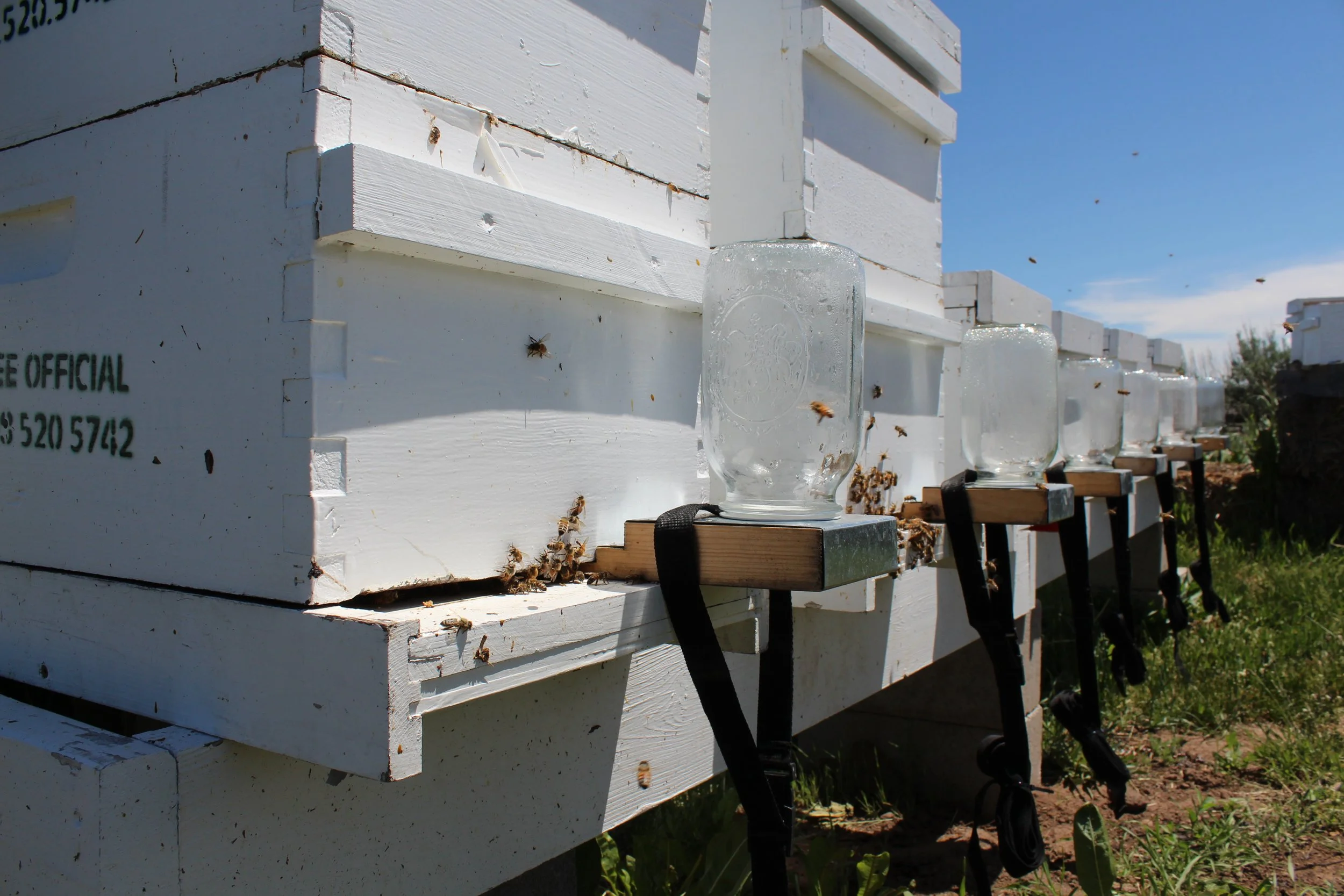
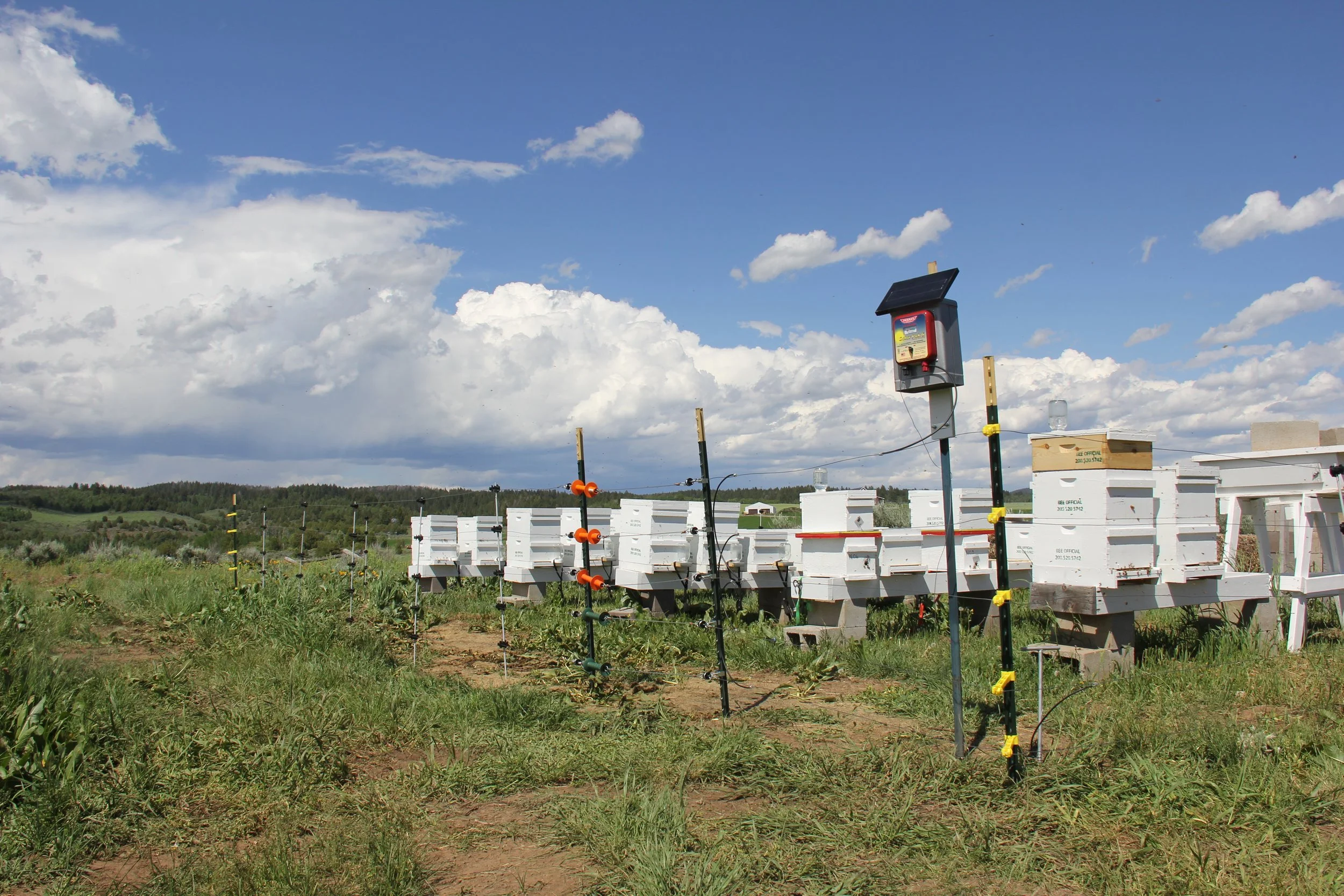
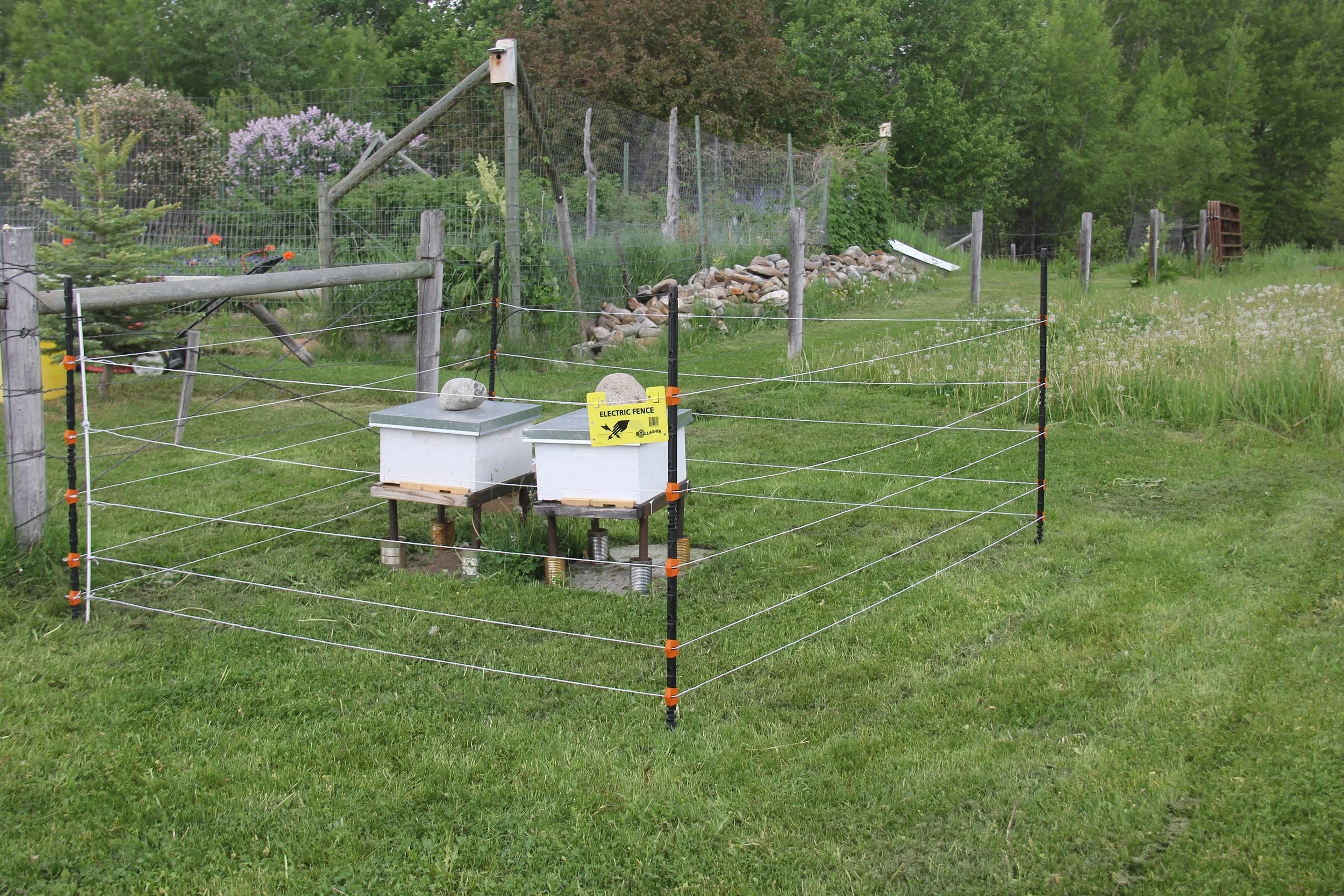
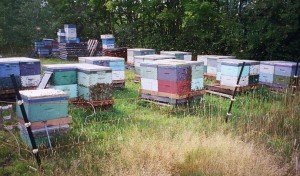
More Resources for Beekeepers
Tools: Look into buying a temporary or portable electric fence kit like this one from Bearwatch Systems or this one from UDAP, or find the supplies for a temporary electric fence from Kencove.
Guide: This guide from Colorado Parks and Wildlife has instructions for building a beehive enclosure.
